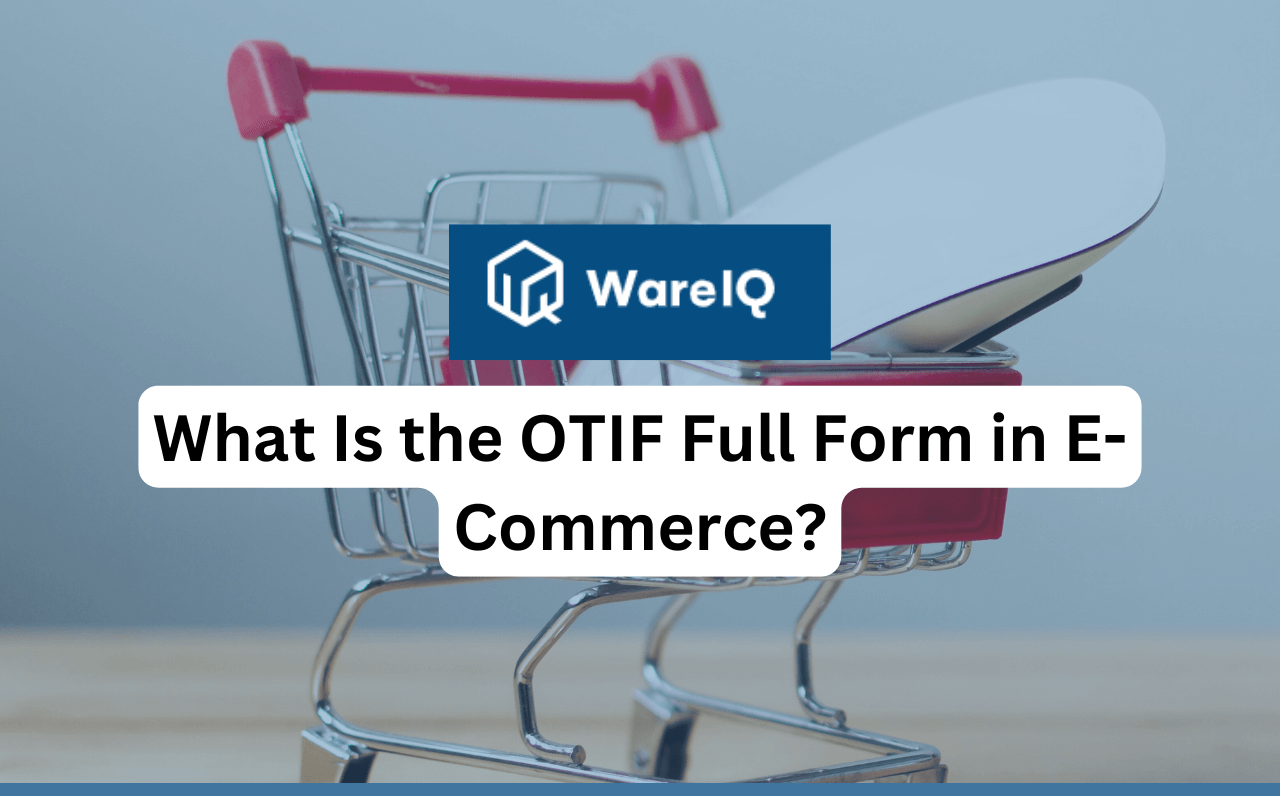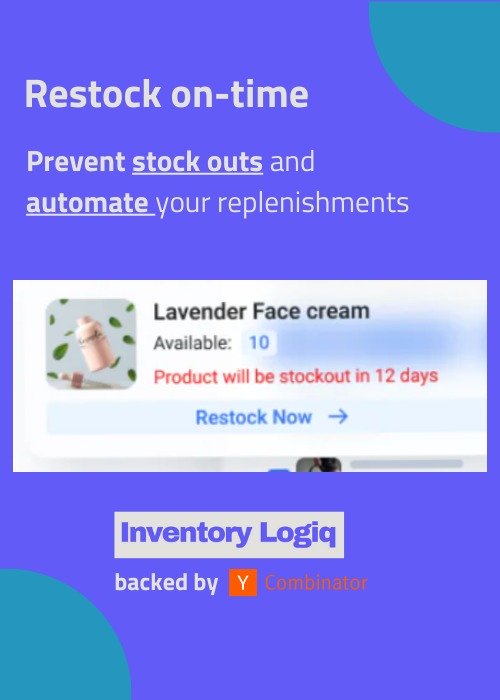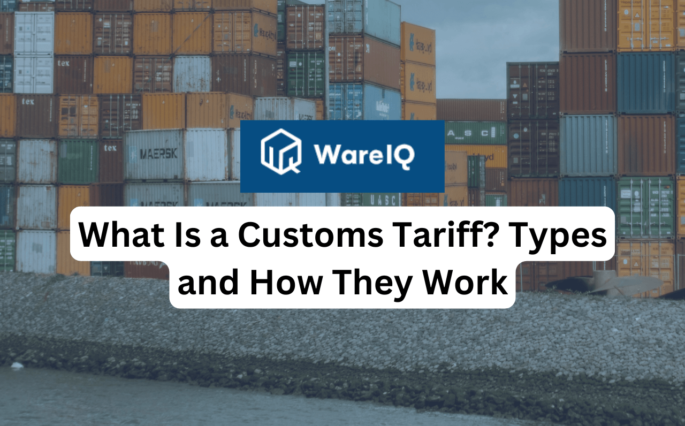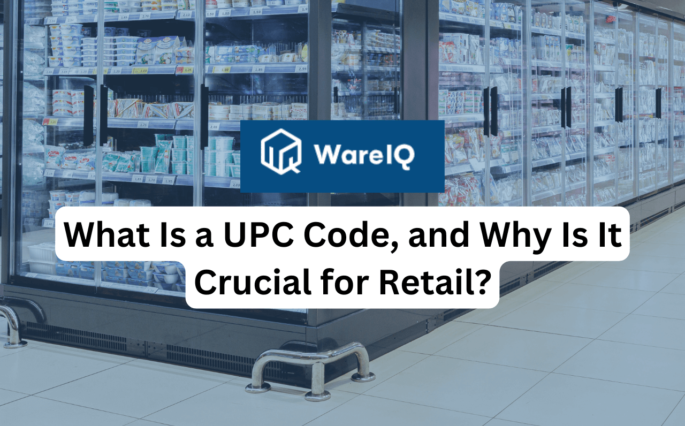What Is the OTIF Full Form in E-Commerce?

Imagine a customer abandoning their cart because their last order arrived late or incomplete. In India’s fast-growing e-commerce market, where timely delivery is essential, every order becomes an opportunity to build trust. The OTIF full form, which stands for On Time In Full, is a crucial metric that ensures orders reach customers exactly as promised. It helps build loyalty, control costs, and fuel business growth.
This blog explains what OTIF means, its significance in e-commerce, and how Indian retailers, exporters, and D2C brands can improve their OTIF performance. We will explore the OTIF formula, offer actionable tips, and show how WareIQ’s solutions can help boost your OTIF score.
- Understanding OTIF in E-Commerce
- What Is the OTIF Full Form?
- Types of OTIF Metrics
- Benefits of OTIF for Indian E-Commerce
- Calculating OTIF: The Formula
- Why OTIF Matters in Indian E-Commerce?
- When to Use OTIF as a KPI?
- Practical Tips to Boost OTIF Performance
- Key Factors Affecting OTIF in E-Commerce
- How WareIQ Enhances OTIF Performance
- Wrapping Up
- FAQs About OTIF in E-Commerce
Understanding OTIF in E-Commerce
To understand OTIF, let’s start with its definition and how it works in real-world e-commerce operations.
What Is the OTIF Full Form?
The OTIF full form is On Time In Full. It is a supply chain metric used to measure whether the right quantity of goods is delivered to the correct location within the promised timeframe.
Introduced by Walmart in 2017, OTIF helps track delivery accuracy and timeliness. In the Indian e-commerce space, platforms like Flipkart and Amazon use On Time In Full to maintain high standards of service. For businesses, it builds customer trust by ensuring deliveries are complete and on schedule.
Types of OTIF Metrics
OTIF can be split into two types, each focusing on different parts of the supply chain.
1. Inbound OTIF
This measures how suppliers perform against purchase orders. For example, if a supplier delivers 100 sarees to a warehouse on time and in full, it helps maintain stock availability and prepares SMEs for sales.
2. Outbound OTIF
This tracks performance in delivering products to customers. For instance, if Myntra delivers a laptop to a customer in Chennai within the promised 48 hours, it reflects good outbound OTIF.
Benefits of OTIF for Indian E-Commerce
High OTIF performance leads to multiple advantages for Indian businesses. Here are some of the key benefits:
a) Enhanced Customer Satisfaction
When orders arrive on time and in full, customers are more likely to return. For example, Amazon India’s consistent OTIF performance leads to positive reviews and higher customer retention.
b) Cost Savings
Timely and accurate deliveries reduce the need for expedited shipping and avoid penalties. Flipkart’s Delhi hub saves significantly by avoiding rush shipments through improved On Time In Full.
c) Stronger Brand Reputation
High OTIF scores mean customers get what they expect. This generates word-of-mouth marketing. Nykaa’s reliable deliveries have helped build a strong online reputation.
d) Improved Supply Chain Efficiency
Tracking On Time In Full helps identify and fix weak points in the supply chain. For example, Snapdeal improved its OTIF score from 75% to 82% by optimising picking and packing processes, which reduced delays by 30%.
Calculating OTIF: The Formula
To track OTIF performance, businesses use a simple calculation:
OTIF% = (Number of On Time In Full Orders / Total Number of Orders) × 100
Example:
If 1,000 orders are shipped and 860 are delivered on time and in full, the On Time In Full score is:
(860 / 1,000) × 100 = 86%
An On Time In Full score between 80% and 90% is considered strong in India. Accurate tracking is important because even small errors can lead to incorrect penalties or missed improvement opportunities.
Why OTIF Matters in Indian E-Commerce?
OTIF is especially important in India due to the country’s complex logistics environment. Retailers like Walmart India apply financial penalties for OTIF failures. Indian SMEs and exporters depend on high On Time In Full scores to avoid fines and keep clients.
With customers now expecting same-day or next-day deliveries, On Time In Full helps businesses meet expectations without losing efficiency or profitability. It also highlights issues such as poor forecasting or warehouse delays, helping brands optimise their operations.
When to Use OTIF as a KPI?
OTIF is a valuable key performance indicator in situations where:
- Deliveries Are Late: If customers report frequent delays, On Time In Full can help identify where the bottlenecks occur, such as slow handovers to delivery partners in cities like Jaipur.
- Orders Are Incomplete or Incorrect: Mistakes like delivering 8 shirts instead of 10 suggest warehouse issues. On Time In Full helps flag these problems.
- Warehouse Processes Are Slow: On Time In Full can reveal delays caused by inefficient packing or picking. Ajio improved its OTIF by 10% after upgrading warehouse technology.
Practical Tips to Boost OTIF Performance
Improving On Time In Full requires targeted actions. Here are strategies suited for India’s logistics ecosystem:
1. Use Advanced Warehouse Management Systems (WMS)
Platforms like Zoho Inventory reduce picking and packing errors. Snapdeal saw a 15% improvement in OTIF after implementing a WMS.
2. Partner with Reliable Carriers
Work with trusted logistics providers such as Delhivery and Ecom Express. Clear communication helps align delivery schedules.
3. Forecast Demand Accurately
Tools like Blue Yonder help predict demand and reduce stockouts. Myntra increased its On Time In Full to 88% by using AI-based forecasting.
3. Optimise Delivery Routes
Software such as Locus shortens delivery times. BigBasket uses route optimisation to maintain a 90% OTIF for grocery deliveries.
4. Track Shipments in Real Time
GPS-enabled dashboards help monitor orders and resolve delays. Nykaa notifies customers of issues in real time, maintaining trust even when problems occur.
Key Factors Affecting OTIF in E-Commerce
To consistently deliver orders on time and in full, businesses must understand what impacts this crucial metric the most. Below are the major factors that influence OTIF performance in the Indian e-commerce landscape:
1. Inventory Accuracy
Inaccurate stock levels lead to order delays or partial shipments. Real-time inventory tracking helps ensure products are available when customers place orders.
2. Warehouse Efficiency
Delays in picking, packing, or dispatching orders reduce on-time performance. Optimised workflows and automation tools improve speed and accuracy.
3. Reliable Logistics Partners
Delivery delays often result from inconsistent carrier performance. Partnering with trusted 3PL providers helps ensure timely last-mile delivery.
4. Forecasting and Planning
Poor demand forecasting leads to stockouts or overstocking. Accurate predictions help maintain the right inventory levels and prepare for spikes in demand.
5. Geographic and Infrastructure Challenges
Deliveries in remote or congested areas face delays due to road conditions, weather, or limited logistics access. Route optimisation tools help mitigate these issues.
How WareIQ Enhances OTIF Performance
To improve OTIF in India’s complex logistics landscape, many businesses partner with WareIQ, a Y Combinator-backed fulfilment platform.
Here’s how WareIQ helps:
- Wide Fulfilment Network: WareIQ operates hubs in over 12 cities and reaches more than 27,000 pin codes. This helps businesses maintain an OTIF rate of 85% or higher.
- AI-Powered Inventory Management: With tools like Inventory LogIQ, WareIQ prevents stockouts and boosts OTIF scores by 10 to 15%.
- Multi-Channel Integration: WareIQ integrates with platforms like Shopify, Amazon, and Flipkart to reduce processing errors and sync orders accurately.
- Real-Time Tracking Tools: GPS tracking and dashboards allow for quick problem resolution and timely customer communication.
- Streamlined Returns Management: WareIQ uses high-definition evidence to handle returns, reducing disputes and maintaining OTIF standards.
Wrapping Up
The OTIF full form—On Time In Full—is a key performance metric for success in Indian e-commerce. It improves customer satisfaction, cuts costs, and strengthens your brand. Whether you’re a large retailer like Amazon or a growing SME, maintaining a high OTIF score helps you stay competitive.
With support from logistics experts like WareIQ, achieving strong OTIF performance is not only possible but also profitable. Start improving your On Time In Full today to build loyalty and scale your business with confidence.
FAQs About OTIF in E-Commerce
What is OTIF’s full form?
OTIF stands for On Time In Full. It measures whether orders are delivered completely and on schedule.
Why is On Time In Full – OTIF important in e-commerce?
OTIF boosts customer trust, saves money, and improves brand reputation, especially in India’s competitive market.
How is OTIF calculated?
OTIF% = (Number of On Time In Full Orders / Total Orders) × 100
What is a good OTIF score?
A score between 80% and 90% is considered strong in Indian e-commerce.
What are the common causes of low OTIF?
Common reasons include poor demand planning, warehouse errors, traffic delays, and unreliable delivery partners.
What are OTIF penalties?
Retailers may impose financial penalties for not meeting OTIF targets. These are common in sectors like FMCG and retail.
How does OTIF improve supply chain visibility?
By tracking delivery timelines and order accuracy, OTIF helps identify and fix weak links in the supply chain.
Can better data improve OTIF performance?
Yes, using real-time data and analytics allows businesses to make quicker decisions and improve delivery accuracy.








